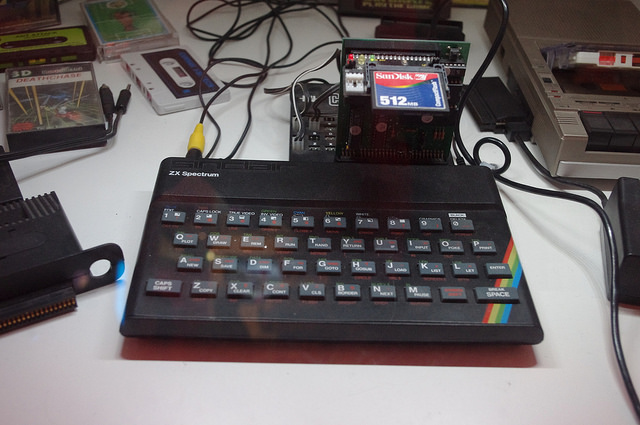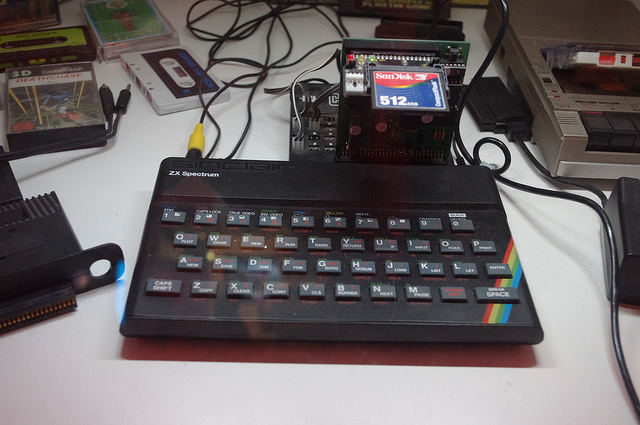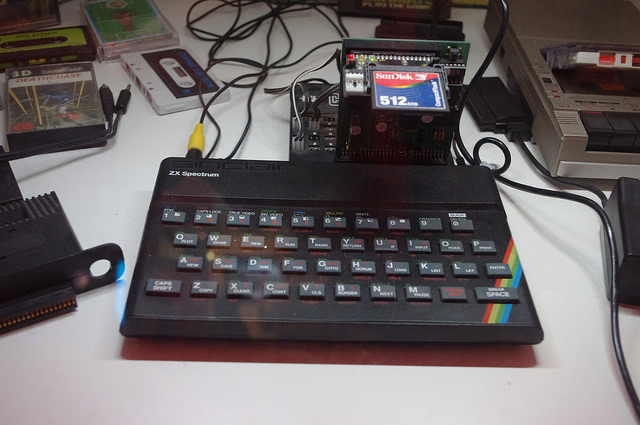Finland’s Telia Tests 5G at a Nokia Base Station Factory
 Using a video analytics application, the operator was able to monitor and analyze a video feed of an assembly line and make real-time corrections.
Using a video analytics application, the operator was able to monitor and analyze a video feed of an assembly line and make real-time corrections.
HyTrust, Twistlock Bolster Broad Focus on VM, Container Security
 Both firms continue to tout their broader cloud security platforms as superior to more focused efforts or those from large cloud providers.
Both firms continue to tout their broader cloud security platforms as superior to more focused efforts or those from large cloud providers.
Israeli IoT Startup Axonize Scores Investment From Deutsche Telekom
 The startup raised $6 million in its Series A round, bringing its total funding to $7.8 million. Axonize’s IoT orchestration platform is based on Microsoft Azure and is built for IoT service providers.
The startup raised $6 million in its Series A round, bringing its total funding to $7.8 million. Axonize’s IoT orchestration platform is based on Microsoft Azure and is built for IoT service providers.
2018 NFV Report Series Part 1: NFV Infrastructure (NFVI) and VIM Available Now
 Download now to learn the latest on the NFV Infrastructure (NFVI) and VIM market.
Download now to learn the latest on the NFV Infrastructure (NFVI) and VIM market.
Cloudflare launches 1.1.1.1 DNS service with privacy, TLS and more
There was an important development this month with the launch of Cloudflare’s new 1.1.1.1 DNS resolver service. This is a significant development for several reasons, but in particular it supports the new DNS-over-TLS and DNS-over-HTTPS protocols that allow for confidential DNS querying and response.
Why 1.1.1.1?
Before we get to that though, Cloudflare joins Google’s Public DNS that uses 8.8.8.8 and Quad9 DNS that uses 9.9.9.9, by implementing 1.1.1.1 as a memorable IP address for accessing its new DNS service. IP addresses are generally not as memorable as domain names, but you need access to a DNS server before you can resolve domain names to IP addresses, so configuring numbers is a necessity. And whilst a memorable IP address might be cool, it’s also proved important recently when DNS resolvers have been blocked or taken down, requiring devices to be pointed elsewhere.
The 1.1.1.1 address is part of the 1.1.1.0 – 1.1.1.255 public IP address range actually allocated to APNIC, one of the five Regional Internet Registries, but it has been randomly used as an address for Continue reading
Introducing Spectrum: Extending Cloudflare To 65,533 More Ports

Today we are introducing Spectrum, which brings Cloudflare’s security and acceleration to the whole spectrum of TCP ports and protocols for our Enterprise customers. It’s DDoS protection for any box, container or VM that connects to the internet; whether it runs email, file transfer or a custom protocol, it can now get the full benefits of Cloudflare. If you want to skip ahead and see it in action, you can scroll to the video demo at the bottom.
DDoS Protection
The core functionality of Spectrum is its ability to block large DDoS attacks. Spectrum benefits from Cloudflare’s existing DDoS mitigation (which this week blocked a 900 Gbps flood). Spectrum’s DDoS protection has already been battle tested. Just soon as we opened up Spectrum for beta, Spectrum received its first SYN flood.
One of Spectrum's earliest deployments was in front of Hypixel’s infrastructure. Hypixel runs the largest minecraft server, and because gamers can be - uh, passionate - they were one of the earliest targets of the terabit-per-second Mirai botnet. “Hypixel was one of the first subjects of the Mirai botnet DDoS attacks and frequently receives large attacks. Before Spectrum, we had to rely on unstable services & techniques Continue reading
Cisco Live 2018 – Big Ideas Theater
We are just around 60 days or so away from Geek Summer Camp 2018, or more commonly known as Cisco …
The post Cisco Live 2018 – Big Ideas Theater appeared first on Fryguy's Blog.
Abusing Linux’s firewall: the hack that allowed us to build Spectrum

Today we are introducing Spectrum: a new Cloudflare feature that brings DDoS protection, load balancing, and content acceleration to any TCP-based protocol.

CC BY-SA 2.0 image by Staffan Vilcans
Soon after we started building Spectrum, we hit a major technical obstacle: Spectrum requires us to accept connections on any valid TCP port, from 1 to 65535. On our Linux edge servers it's impossible to "accept inbound connections on any port number". This is not a Linux-specific limitation: it's a characteristic of the BSD sockets API, the basis for network applications on most operating systems. Under the hood there are two overlapping problems that we needed to solve in order to deliver Spectrum:
- how to accept TCP connections on all port numbers from 1 to 65535
- how to configure a single Linux server to accept connections on a very large number of IP addresses (we have many thousands of IP addresses in our anycast ranges)
Assigning millions of IPs to a server
Cloudflare’s edge servers have an almost identical configuration. In our early days, we used to assign specific /32 (and /128) IP addresses to the loopback network interface[1]. This worked well when we had dozens of IP Continue reading
리눅스 방화벽을 남용하기: Spectrum 을 만들 수 있었던 해킹

This is a Korean translation of a prior post by Marek Majkowski.
얼마전 우리는 Spectrum을 발표하였습니다: 어떤 TCP 기반의 프로토콜이라도 DDoS 방어, 로드밸런싱 그리고 컨텐츠 가속을 할 수 있는 새로운 Cloudflare의 기능입니다.

CC BY-SA 2.0 image by Staffan Vilcans
Spectrum을 만들기 시작하고 얼마 되지 않아서 중요한 기술적 난관에 부딛히게 되었습니다: Spectrum은 1부터 65535 사이의 어떤 유효한 TCP 포트라도 접속을 허용해야 합니다. 우리의 리눅스 엣지 서버에서는 "임의의 포트 번호에 인바운드 연결을 허용"은 불가능합니다. 이것은 리눅스만의 제한은 아닙니다: 이것은 대부분 운영 체제의 네트워크 어플리케이션의 기반인 BSD 소켓 API의 특성입니다. 내부적으로 Spectrum을 완성하기 위해서 풀어야 하는 서로 겹치는 문제가 둘 있었습니다:
- 1에서 65535 사이의 모든 포트 번호에 TCP 연결을 어떻게 받아들일 것인가
- 매우 많은 수의 IP 주소로 오는 연결을 받아들이도록 단일 리눅스 서버를 어떻게 설정할 것인가 (우리는 애니캐스트 대역에 수많은 IP주소를 갖고 있습니다)
서버에 수백만의 IP를 할당
Cloudflare의 엣지 서버는 거의 동일한 구성을 갖고 있습니다. 초창기에는 루프백 네트워크 인터페이스에 특정한 /32 (그리고 /128) IP 주소를 할당하였습니다[1]. 이것은 수십개의 IP주소만 갖고 있었을 때에는 잘 동작 하였지만 더 성장함에 따라 확대 적용하는 것에는 실패하였습니다.
그때 "AnyIP" 트릭이 등장하였습니다. AnyIP는 단일 주소가 아니라 전체 IP 프리픽스 (서브넷)을 루프백 인터페이스에 할당하도록 해 줍니다. 사실 AnyIP를 많이 사용하고 있습니다: 여러분 컴퓨터에는 루브백 인터페이스에 Continue reading
Encoding data in dubstep drops
Encoding data in dubstep drops
[Warning: Those who can’t stand EDM/dubstep, oh boy do I have bad news for you in regards to this blog post]
Dubstep songs are often criticized as sounding extremely computer generated and often just too aggressi
Public WiFi Risks Worry IT Pros
Spiceworks research reveals IT pros' data security concerns about users connecting to public WiFi networks.
